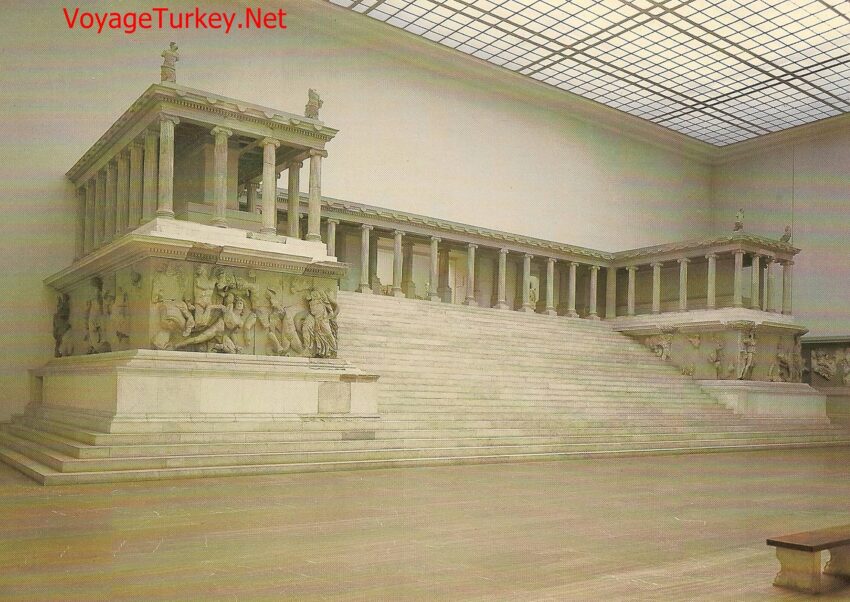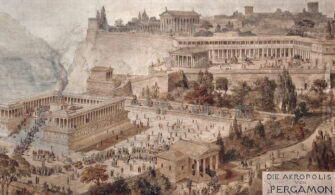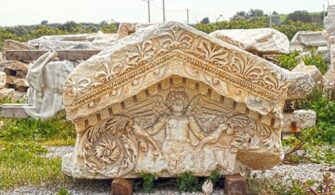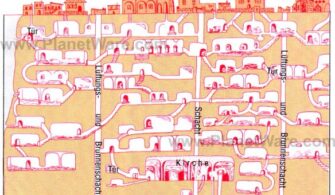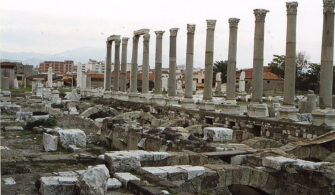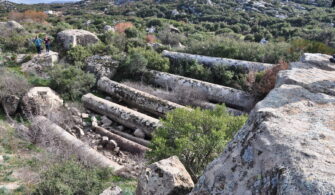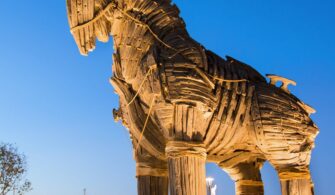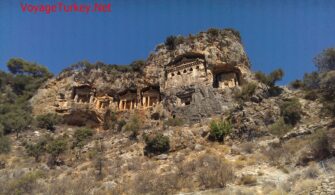Altar of Zeus at Pergamon
The Altar of Zeus, also called the Pergamon Altar, is a monumental structure built to commemorate the victory of the Pergamon Kingdom over the Galatians. The Altar of Pergamon referred to as the Throne of Satan in a brief narrative in the Revelation section of the Book of St. John, is a very impressive structure. The Altar of Zeus is the largest Greek altar that is known to exist.
The Galatians, or Celts, migrated from central Europe to Greece in the 3rd century BC and plundered the country. Famous for their plundering and barbarism, these people came to Anatolia after Greece and lived in a century of fear for the people of the region. The Pergamon kings fought the Celts in the 3rd century BC. At the end of the war, the Pergamon kings won a great victory over the Galatians with their heroism and courage.
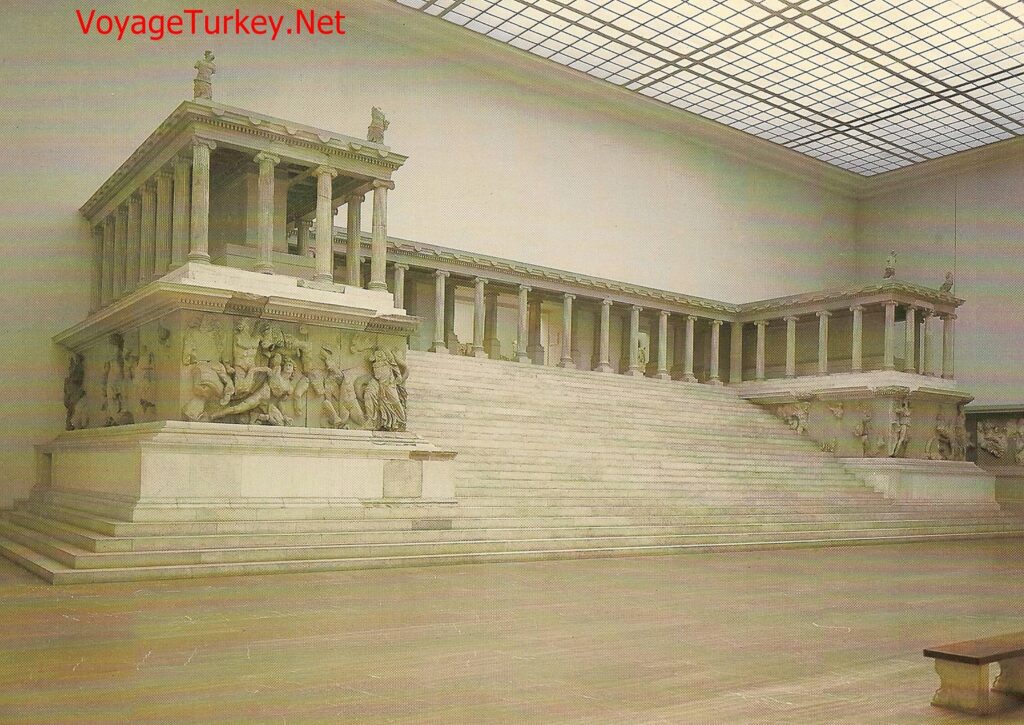
The temple, a very impressive piece of work with its architectural style, was dedicated to the god Zeus in commemoration of the victory of Attalos II over the Galatians during the period of Eumenes II (197 – 159 BC). The altar was dedicated to the goddess Athena and all the other gods, as well as to Zeus.
Who built an altar to Zeus in the Temple?
This structure, dazzling in its design, craftsmanship, architecture, sculptures, and appearance, was built during the reign of King Eumenes II in the first half of the 2nd century BC on one of the terraces of the Pergamon Acropolis. The altar was designed by Phyromachos, the seventh and last of the great Greek sculptors.
The simulation of the original form of the temple is shown in the following two pictures.
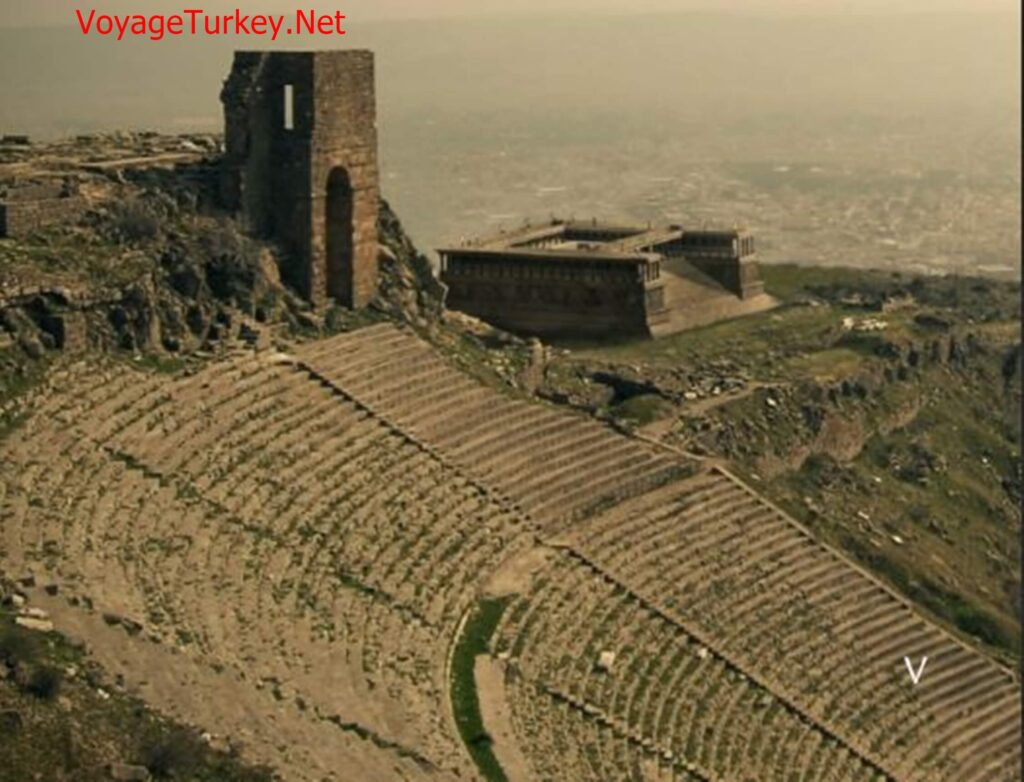
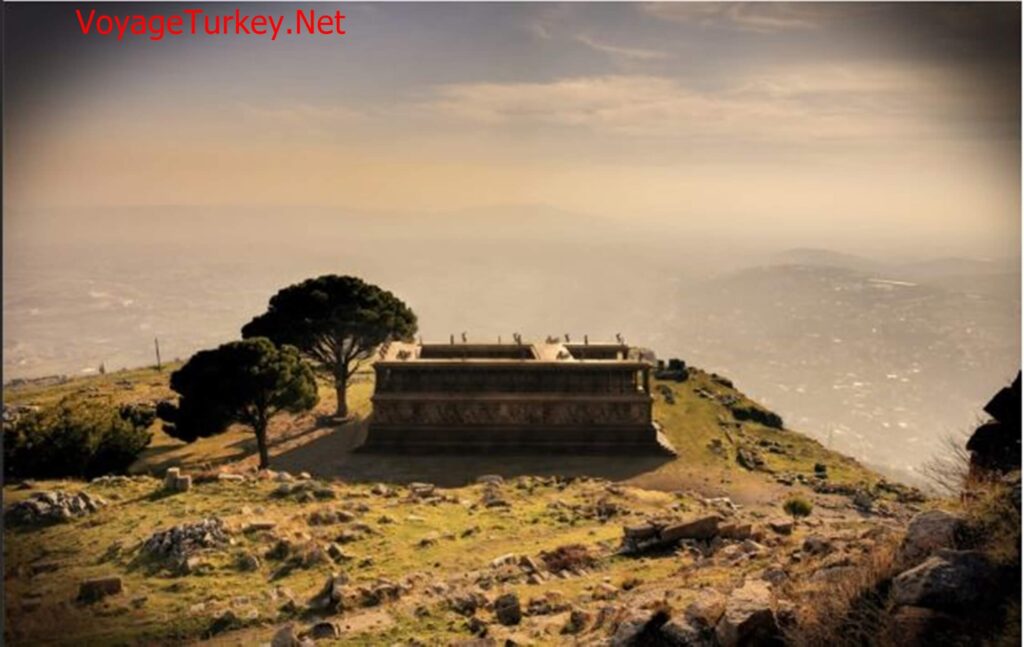
Why is the Altar of Zeus so important?
This structure, which housed the most magnificent examples of sculpture of the time, was never fully completed because of King Prusias II attacked Pergamon in 156 BC.
The Altar of Zeus is 12 meters high. It’s a horseshoe-shaped structure that sits on a square area with an edge of approximately 35 meters.
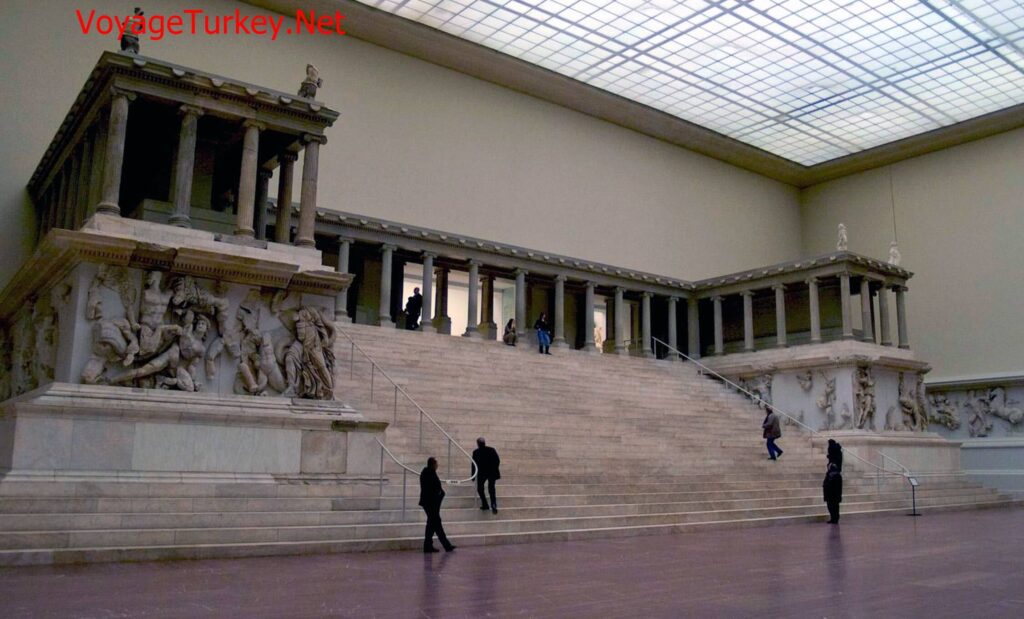
Characteristics of the Pergamon Altar
The structure consists of a five-stepped foundation, a podium rising from the foundation, a belt of reliefs rising from the podium, marble columns rising from the belt, and a porch closing on the marble columns.
In Greek mythology, these reliefs are like a formal parade of giants and gods. The reliefs surrounding the altar of Zeus depict the gods fighting the giants, called Gigantomakhia or Battle of the Giants. The winning gods symbolize Pergamon and the losing giants symbolize the enemy Galatians. The frieze sculptures show the battle of the gods against the giants. In the end, the gods are victorious.
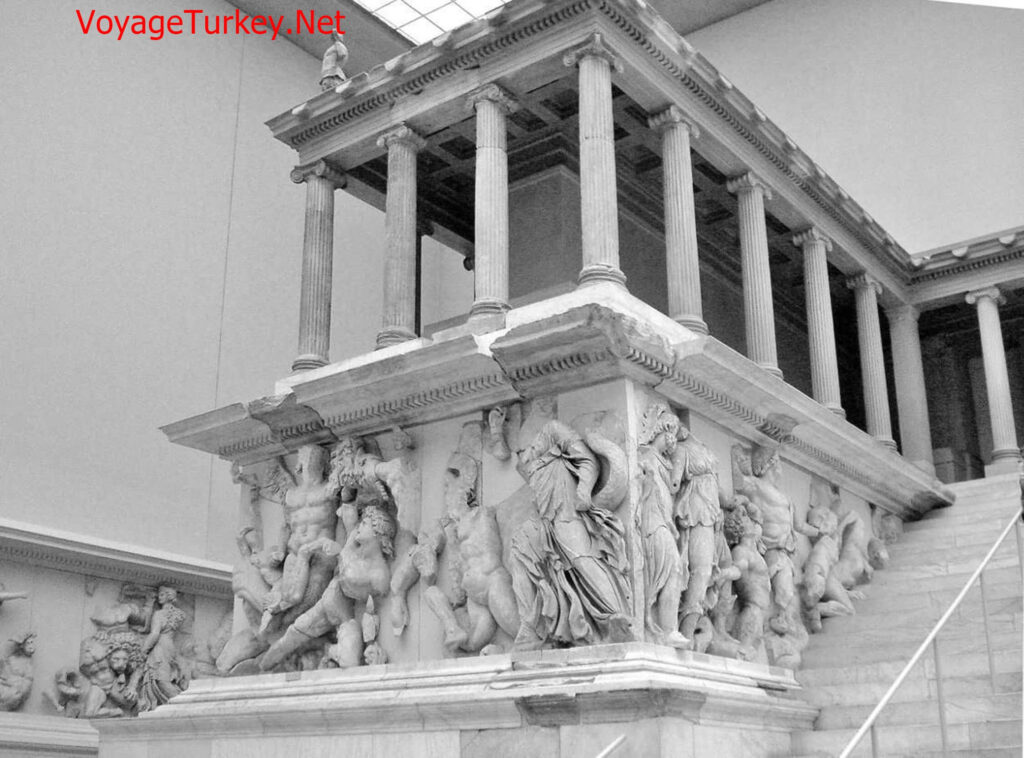
The gods are depicted with soft and thin lines and the giants with hard and rough lines in the reliefs, which are 120 meters long and 2.3 meters high. Including the reliefs of Zeus, Athena, Apollo, Artemis, Okeanos, Nereus, Orion, and Helios, there are 118 reliefs in total.
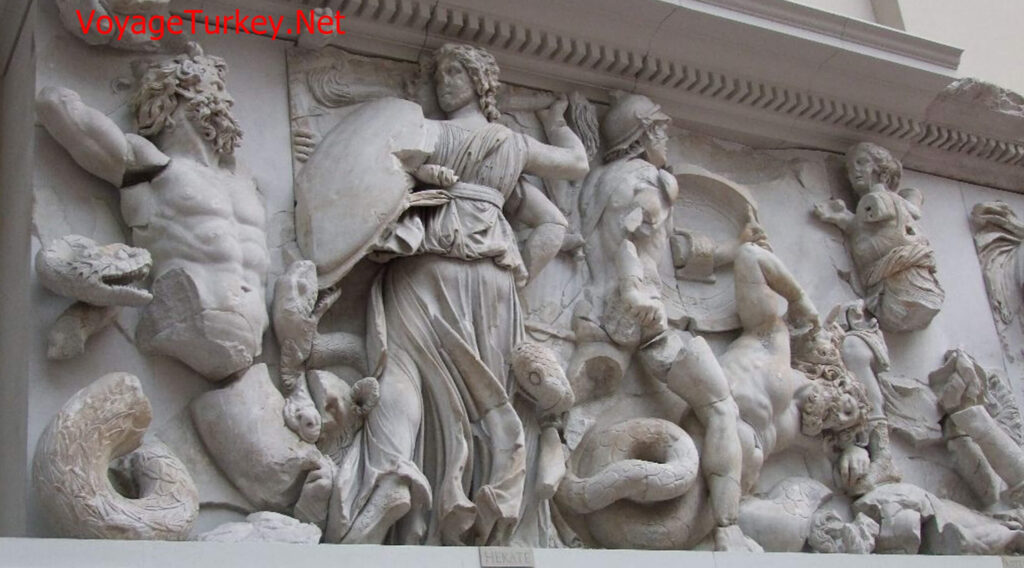
The life of Telephos, the legendary founder of Bergama, is told in the reliefs on the walls surrounding the sacrificial stone in the center of the building.
Telephos, the legendary founder of Pergamon, was the son of the semi-mortal god Herakles. Herakles gets the daughter of the king of Tegea pregnant and then leaves Tegea. The prophecy is that the king will have a grandson and that the grandson will be the death of the king. When the king finds out that his daughter is pregnant, he puts the baby in a basket and throws it into the sea to get rid of the baby. The baby inside the basket is Telephos. The basket reaches the shores of Mysia in Anatolia (between the modern-day cities of İzmir and Çanakkale). Later, he became king of Mysia and sided with the Trojans in the Trojan War. With this mythological body of history, Telephos is considered the legendary king who founded Pergamon.
There is little to see at the original site today, but it is enough to give a sense of the grandeur of the great shrine.
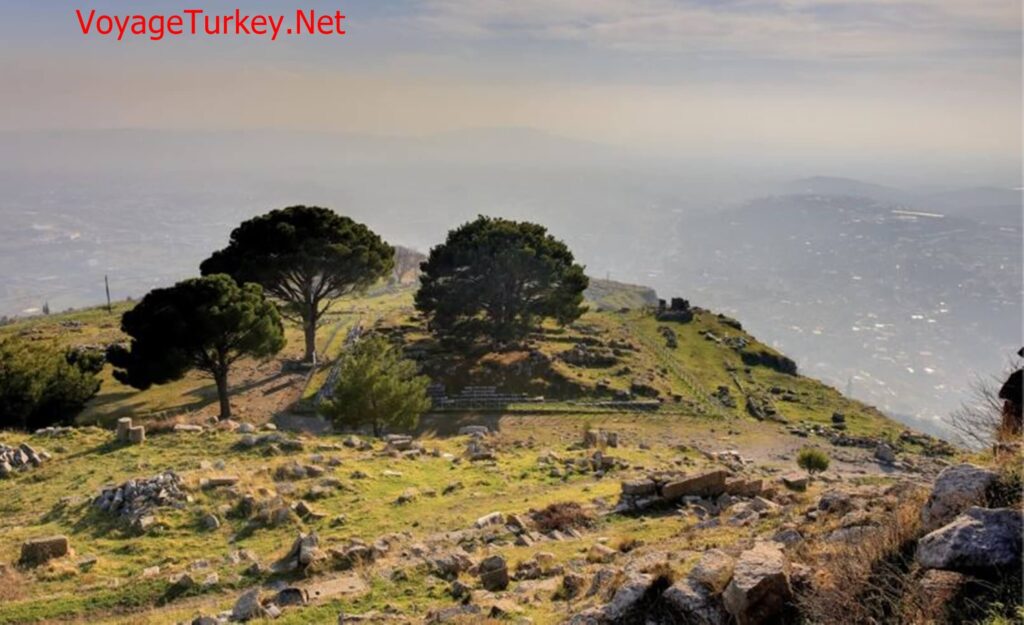
Where is the Altar of Zeus today?
The famous Altar of Zeus, which originally stood on the Acropolis, was brought to Germany in 1897 and is currently exhibited in the Pergamon Museum in Berlin.
The five-stepped foundations of the Altar of Zeus are still standing on the Pergamon Acropolis. On the other hand, the podium, the friezes, and the reliefs are made of light-colored marble and are exhibited in the Berlin Museum.
